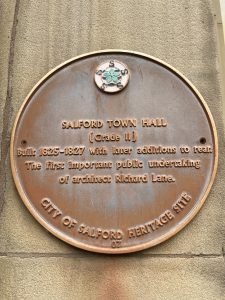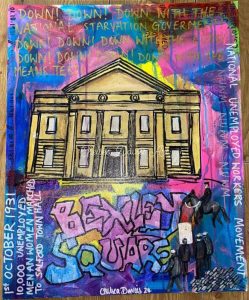
August 2025 will mark two hundred years since the foundational stone of the former Salford Magistrates Court was laid by Lord Bexley.
The historical, Grade II listed building was built between 1825-1827 and extended multiple times in its history – and has stood the test of time in the city.
Originally designed by architect Richard Lane, the building was originally purposed as a Market Hall, before becoming the city’s town hall, as well being home to a police and fire station as well as a courthouse.
The building that has stood in the city for 200 years, was listed as a Grade II listed building in 1952 – and the building was noted for its Neo-classical style and the influence it takes from ancient Greek and Roman architecture.
But despite its beauty and longevity, the building also saw itself purposed as Salford Magistrates Court, starting a 171-year service as the city’s court before closing in 2011.
The city court was shut due to government spending cuts, merging with the much larger Manchester magistrates court, leaving Salford as the only city in a country without its own court.
And that wasn’t the first challenge to the building’s significance, as it once served as Salford’s local seat of government until the county borough was abolished in 1972.
Succeeding this abolition, Swinton and Pendlebury Town Hall was designated as the new meeting site for the enlarged authority area for the City of Salford in 1974.
The building, now features ‘134 luxury residential units that conserve the character and features of the original Magistrates court’ according to the developers’ website.
 Now converted into modern apartments, the former town hall remains a visible part of daily life in Salford, just as it has been for the past 200 years.
Now converted into modern apartments, the former town hall remains a visible part of daily life in Salford, just as it has been for the past 200 years.
And though its purpose has shifted, its presence continues to link the city’s past with its present – and this is still on display on the building with a commemorative plaque for the Battle of Bexley Square.
The Battle of Bexley Square took place in 1931, and was a originally a demonstration that took place on October 1 in response to the economic crisis and mass unemployment.
10,000 men and women demonstrated their demands, before it turned to chaos hen plain clothed officers and mounted horse units descended into the crowd, leading protesters to fight back against the police forces.
The mix of history and moderisation is something that is still so important for the city of Salford, as Chelsea Davies, winner of Salford Museum and Art Gallery People’s Choice Award 2024, highlighted the importance of The Battle of Bexley Square on Salford’s history and the value of teaching local history.
She said: “I have said it many times before that there isn’t enough about local history taught in schools.
“If more of the children of our city knew the fight it took to get us where we are today, I strongly believe we’d have a generation of children prouder of the city they come from.”
Davies’ art depicts scenes from across Salford, with the piece on Bexley Square showing the former town hall as the site of the famous battle, “with the Bexley Square piece I wanted to make it bright and modern, as with most of my artwork I love to use a range of colour.”
With this painting she hopes to echo the sentiments expressed nighty four years ago: “One of the things I think stands out about The Battle of Bexley Square is that nearly 100 years on and we’re still fighting poverty.
“In a City where we have so much history, so many modern day opportunities from the BBC and ITV on our doorstep, with media city, The Lowry, the first free public library, so much has been created in this city yet we still have so many living in poverty.”
And although the building is turning 200 years old it is a strong reminder of what Salford was, what Salford is, and what the city continues to be – and if walls could talk the Salford Town Hall would have a lot to say.















That’s good they kpin the old building of the baths not much of Salford left in greengate where I live